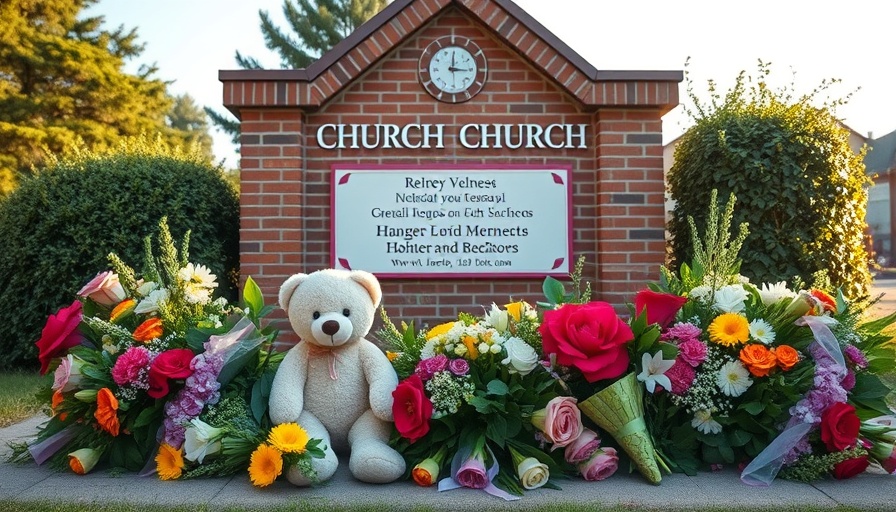
Milton's Recent Vote: A Sign of Growing Tension Over Housing Policy
In a significant turn of events, Milton, Massachusetts, has recently rejected a crucial housing plan aimed at complying with the MBTA Communities Act, leading to a deep divide among its residents and decision-makers alike. The outcome of the February 14 special election saw about 54% of voters oppose the proposed zoning changes, spurred into action by concerns about what many residents deemed an excessive burden imposed by state requirements.
The MBTA Communities Act mandates that municipalities in the Massachusetts Bay Transportation Authority service area adopt zoning regulations that allow for multifamily housing units, thereby addressing the regional housing crisis. This law aims to enhance access to affordable housing, particularly in areas close to public transit. However, amid the contentious discussions surrounding the proposed zoning changes, many Milton residents felt that locally tailored development processes were being compromised.
Local Voices: The Discontent Behind the Vote
The opposition campaign, known as No4Milton, cultivated a substantial grassroots movement, advocating for a reversal of the zoning rules that were seen as imposed from above. Resident Brian Kelley highlighted the sentiment among those who voted against the plan: "We’re pleased to have won. The people voted. I’m not saying it was a slam dunk win. It was a close race." Kelley suggested that the state's rapid timeline for compliance didn’t adequately account for the unique needs of Milton, arguing: "Too much too fast didn’t offer solutions to the congestion that is just horrible in our town already." This grassroots opposition poses a question for local officials and state leaders: how much control should communities retain over their development plans?
Implications of Noncompliance: A Cautionary Tale
The rejection of this plan has broader implications beyond Milton. As stated by Governor Maura Healey, the town is now in noncompliance with the MBTA Communities Act, which jeopardizes its eligibility for crucial state grants and funding. This situation sets a concerning precedent that could embolden other communities contemplating similar routes of noncompliance. Attorney General Andrea Campbell clearly articulated the potential consequences, emphasizing that the responsibility of municipalities to adhere to state laws is non-negotiable.
State officials fear that Milton’s decision could catalyze a domino effect across the region, undermining efforts to promote affordable housing initiatives that are critical in combating the housing crisis. Healey reaffirmed the urgency of creating opportunities for housing development as a response to increasing demand for affordable homes, stating, “There is no greater priority than making housing more affordable.”
Future Trends in Local Governance
This situation has ignited a larger debate about local governance and the role of state directives in shaping community infrastructure. The conflict arose from differing perspectives on residential development, highlighting the friction between state-level mandates designed to alleviate a growing housing crisis and local desires for maintaining control over zoning and development decisions.
Interestingly, while opponents of the zoning changes claim they wish to collaborate with the state for alternative solutions, the sentiment displayed on February 14 reflects broader national discourses on democracy and local governance. The insistence on local autonomy resonates with a growing group of citizens who feel that decisions directly affecting their communities are often made without sufficient input from residents. A similar dialogue is seen in various states, especially in swing states where issues of zoning, housing, and local governance have become focal points of partisan division.
A Reflection on the Importance of Public Engagement
The overwhelming voter turnout in the Milton election serves as an important reminder of the power of citizen engagement. Approximately half of the town's registered voters turned out, indicating a significant public interest in the outcome of zoning decisions that will affect their neighborhoods. This level of participation showcases how engaged citizens can influence local policy, shaping the future of their community.
Moving forward, the potential for a compromise plan seems to be on the horizon. The results of this election not only reflect the immediate dynamics at play in Milton but may also serve as a case study for other municipalities grappling with the tension between state-mandated legislation and local governance.
Conclusion: A Call for Cooperative Solutions
As this narrative unfolds, Milton stands at a critical juncture, one that could reshape its approach to development and community planning. The challenge lies in finding a balance that allows for necessary growth while respecting local community values and preferences. Local leaders must engage in collaborative dialogues with state officials to design policies that acknowledge the unique characteristics of each town while still addressing the urgent need for affordable housing solutions. The residents of Milton, along with state partners, must work together to navigate these complex issues effectively.
 Add Row
Add Row  Add
Add 




Write A Comment